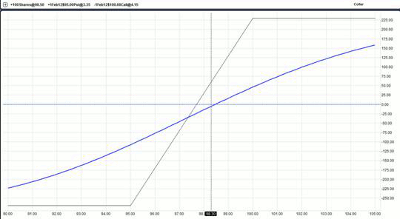Earnings season can result in surprise moves and heightened risk, but option collars allow traders to limit losses while still taking advantage of gains should the underlying move higher on positive news.
To the naive spectator, earnings announcements may seem like manna from heaven, a Godsend providing instant outsized profits. It’s not uncommon to see stocks explode higher, capturing huge gains in a single day following their quarterly release.
Take Google Inc. (GOOG), for instance. In response to its last two earnings releases, it was up a quick 13% and 7%, respectively. Google never misses, so just buy calls and bang…instant profits. Well, not quite this time around for Google.
See related: What Google’s Earnings Really Mean
Unbeknownst to these shortsighted investors is the fact that a large portion of the so-called manna is laced with arsenic. Many earnings announcements are downright toxic and can result in instant losses of epic proportions.
Just ask any Netflix (NFLX) junkie that held into the October 2011 announcement, which resulted in a 37% gap down.
Over time, as earnings seasons come and go, one overriding truth becomes apparent: earnings announcements are the playground for degenerate gamblers.
Fortunately, astute traders can sidestep the earnings drama by utilizing the risk-reducing nature of the options market. The iron-clad collar strategy affords the ability to protect stock positions into earnings.
To initiate a collar, stock owners sell an out-of-the-money (OTM) call option while simultaneously buying an out-of-the-money put option in the same expiration month. With the collar in place, traders enter earnings with defined risk to the downside and limited reward to the upside.
Suppose you own 100 shares of XYZ stock, which is currently trading for $98.50. To enter a collar, you could sell the February 100 call for, let’s imagine, $4.15, and buy the Feb 95 put for $3.35. At those current prices, you would receive a credit of $.80 to initiate the collar (the risk graph below displays the collar position).
By purchasing the Feb 95 put, you acquire the right to sell your shares at $95. That limits your downside risk to $3.50 ($98.50-$95) minus the $.80 received from entering the collar, or $2.70.
By selling the Feb 100 call, you obligate yourself to sell the stock at $100. That limits your profit potential to $1.50 ($100–$98.50) plus the $.80 received from entering the collar, for a total of $2.30.
Next time you’re waffling with whether or not to hold a stock position into earnings, consider appealing to the protection afforded by the collar strategy.
Graphically, here’s what an option collar profit and loss potential looks like:
It’s always a smart idea to limit your risk when trading. Option collars will allow you to do so but still take advantage of gains should the underlying benefit from a positive move on any news.
By Tyler Craig of TylersTrading.com



















